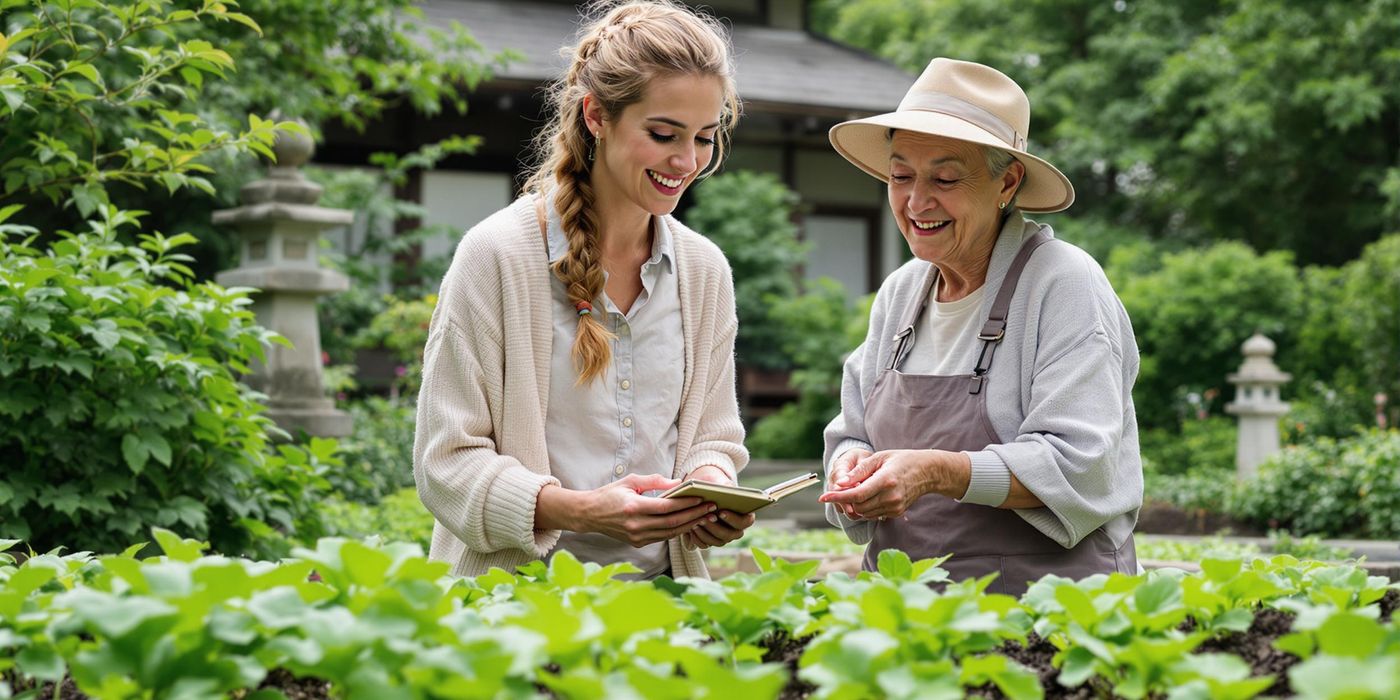As a freelance urban gardener and travel blogger, I've often found myself torn between my love for nurturing plants and my wanderlust. How can you possibly maintain your green thumb while constantly on the go? It's a question I've pondered for years, and through my travels, I've discovered some wonderful ways to incorporate gardening into my adventures. So, whether you're jetting off to a bustling city or exploring serene landscapes, here are some tips to help you embrace your inner gardener on the road.
Embracing Your Green Thumb on the Go
For many of us, gardening is more than just a hobby; it's a passion, a way to connect with nature, and a source of immense joy. However, the thought of leaving our beloved plants behind while traveling can be disheartening. The challenges are real: Who will water them? Will they get enough sunlight? Will they survive without us?
But don't let these concerns deter you from exploring the world. In fact, travel can be an incredible opportunity to expand your gardening horizons. With the increasing interest in sustainable and eco-conscious travel, there are now more ways than ever to incorporate urban gardening into your travel experiences. From visiting community gardens to staying in plant-friendly accommodations, the possibilities are endless.
Discovering Community Gardens: Oases in the City
Community gardens are shared spaces where people come together to grow plants, vegetables, and flowers. They are often located in urban areas and serve as vital green spaces, promoting biodiversity and fostering a sense of community. Visiting these gardens while traveling can be a truly enriching experience.
Finding community gardens in your travel destinations is easier than you might think. Online resources like the American Community Gardening Association and local city websites often list community gardens in the area. Don't hesitate to reach out to local gardening clubs or community centers for recommendations. Locals are usually thrilled to share their knowledge and passion for gardening.
I remember once stumbling upon a hidden community garden in the heart of Kyoto, Japan. Tucked away behind a traditional tea house, it was a vibrant oasis filled with meticulously arranged plants and tranquil water features. I spent hours chatting with the local gardeners, learning about their unique techniques for growing Japanese vegetables and flowers. It was an unforgettable experience that deepened my appreciation for the local culture and gardening practices.
Visiting community gardens offers numerous benefits. You'll have the opportunity to learn about local plants and gardening techniques, connect with like-minded individuals, and witness firsthand the positive impact of community-based initiatives. Plus, it's a great way to escape the hustle and bustle of city life and immerse yourself in nature.
Plant-Friendly Accommodations: A Growing Trend
Imagine staying in a hotel where your plants are not only welcome but also pampered. Plant-friendly accommodations are a growing trend, catering to travelers who want to bring their leafy companions along for the ride. These hotels offer amenities such as plant-sitting services, ensuring your plants receive the care they need while you're out exploring. They also provide suitable lighting and botanical toiletries, creating a harmonious environment for both you and your plants.
One example of a hotel that caters to plant lovers is the Elwood Hotel & Suites in Lexington, Kentucky, which features lush greenery throughout its spaces. Another example is The Hoxton Southwark in London, which offers rooms with plants and even a “Plant Doctor” service. To find plant-friendly accommodations, search online for “plant-friendly hotels” or “pet-friendly hotels” and inquire about their plant policies. You can also check out specialized travel platforms that focus on sustainable and eco-friendly travel options.
When booking, be sure to inquire about specific plant-related amenities and any restrictions on the types or sizes of plants allowed. Some hotels may have designated plant-sitting areas or offer workshops on plant care. By choosing plant-friendly accommodations, you can enjoy a relaxing and worry-free travel experience, knowing that your green companions are well taken care of.
Creating a Miniature Garden on the Road
If you can't bear to leave your plants behind, consider bringing a miniature garden with you. Terrariums and miniature herb gardens are excellent options for travelers who want to enjoy a touch of greenery on the road. These small, portable gardens can easily fit into your luggage and add a touch of nature to your hotel room or temporary accommodation.
When selecting plants for your miniature garden, opt for low-maintenance varieties that can tolerate travel conditions. Succulents, air plants, and small herbs like mint or thyme are all great choices. Pack your miniature garden carefully, using protective materials like bubble wrap or packing peanuts to prevent damage during transit. Be sure to check airline regulations regarding transporting plants, as some restrictions may apply.
Once you arrive at your destination, find a spot in your room with adequate sunlight and ventilation for your miniature garden. Water sparingly, as overwatering is a common mistake. With a little care and attention, your miniature garden will thrive, bringing a sense of calm and connection to nature during your travels.
Sustainable Gardening Practices for Travelers
Traveling sustainably is crucial, and that extends to gardening practices as well. Reduce waste by bringing your own reusable gardening tools and containers. Conserve water by using self-watering planters or employing water-saving techniques like mulching. Support local nurseries and farmers' markets for plant-related needs, as they often offer native plants and eco-friendly gardening products.
Composting while traveling may seem challenging, but it's possible with a little creativity. Use compostable bags for plant waste and dispose of them in designated composting bins, if available. Alternatively, consider vermicomposting, which uses worms to break down organic matter. Small vermicomposting kits are available for travelers who want to compost on the go.
By adopting sustainable gardening practices, you can minimize your environmental impact and contribute to the well-being of the communities you visit. It's a win-win situation for both you and the planet.
Engaging with Local Gardening Culture
One of the best ways to immerse yourself in a new culture is through gardening. Volunteer at community gardens, attend local gardening workshops, or visit botanical gardens to learn about native plants and traditional gardening techniques. Engaging with local gardening communities can provide invaluable insights into the region's history, culture, and environmental practices.
When interacting with local gardeners, be respectful of their practices and customs. Ask questions, listen attentively, and offer your assistance. Sharing your own gardening knowledge and experiences can foster a sense of camaraderie and promote cultural exchange. Remember, gardening is a universal language that transcends borders and connects people from all walks of life.
Through cultural exchange in gardening, you not only promote biodiversity and preserve local heritage but also enrich your own understanding of the world. It's a transformative experience that can broaden your perspective and deepen your appreciation for the interconnectedness of all living things.
Maintaining Your Home Garden While Away
Before embarking on your travels, take steps to prepare your home garden for your absence. Mulch your plants to retain moisture, water them deeply, and set up irrigation systems to ensure they receive adequate hydration while you're away. Consider using technology, such as timers and smart watering systems, to automate garden care.
Finding a reliable plant-sitter or house-sitter is essential for long trips. Ask friends, family, or neighbors to check on your garden regularly and provide necessary care. Alternatively, hire a professional plant-sitting service. Provide detailed instructions on watering, fertilizing, and pest control to ensure your garden thrives in your absence.
Protect your garden from pests and diseases by applying preventative treatments before you leave. Remove any dead or diseased foliage and ensure proper ventilation to prevent fungal growth. By taking these precautions, you can minimize the risk of problems and return to a healthy and thriving garden.
Tips to help you embrace your inner gardener on the road. From visiting community gardens to plant-friendly accommodations, the possibilities are endless.









